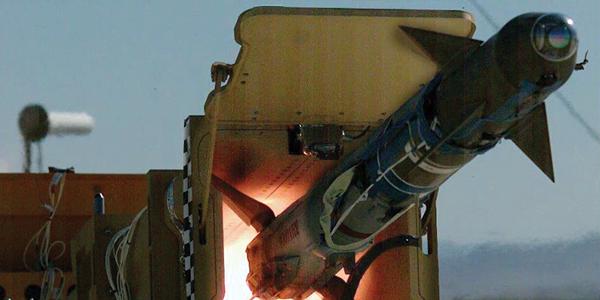PEO Spotlight: U.S. Army on Target With Missile Technology Makeovers
After more than a decade of war, modernizing the U.S. Army has beset leaders who face onerous decisions impacted by declining budgets, drawdowns and a shift in operational focus.
After more than a decade of war, modernizing the U.S. Army has beset leaders who face onerous decisions impacted by declining budgets, drawdowns and a shift in operational focus. The angst over prioritizing funding for missiles and space is no different, but some well-defined programs in four primary domains garner intense focus as commanders seek to improve airborne and ground-based technologies that increase firepower and lethality for troops, says Brig. Gen. L. Neil Thurgood, USA, program executive officer (PEO) for Missiles and Space, based at Redstone Arsenal in Alabama.
PEO Missiles and Space (MS) develops, produces and fields technologies on established weapon systems such as missile platforms, including the Patriot, Javelin and Hellfire, the latter of which is getting a makeover. “The number one priority in [the aviation] domain … is the Joint Air-to-Ground Missile program (JAGM),” Gen. Thurgood says. “That program is the next generation of what we currently call today the Hellfire missile.” An upgrade requirement includes a dual mode seeker, making the system much more dynamic and versatile. “We can use laser to shoot or multi-mode radar to shoot, which gives our soldiers more opportunities to engage targets in more environments,” Gen. Thurgood says. “It is designed to be launched from all current platforms across all of the services and that’s really important to us. If you buy a new missile, you can’t afford to buy all new platforms. You have to make it fit on what you have.”
Improvements to shoulder-fired missile systems will increase soldiers’ ability to identify targets while lightening the load they must carry into battle. “In that domain, we have a new emerging program called the lightweight aerial munitions,” he states. A small electric motor keeps the missiles airborne for roughly 15 minutes, giving soldiers operating on the ground additional time to scout out potential targets.
Soldiers and Marines used a limited number in Afghanistan as part of the Army’s rapid fielding initiative, which is designed to identify, develop and quickly field game-changing technologies. “Right now, it’s being used in a limited way to prove out the technology. It’s a very new way of using a soldier-carried piece of equipment that [troops] can then fly to the target. It’s particularly useful in urban terrain and in a mountainous environment because you can fly it beyond where you can currently see.” A mounted camera provides users with better situational awareness and the ability to abort an attack, if necessary. “If they’re going to the target and for some reason, at the last minute, the target changes … they can move away from the target and pull that round back, so we don’t have to put other things at risk besides the target.”
Additionally, PEO MS is working through the early stages of a long-range fire precision munitions program, the next generation of the prized Howitzer artillery piece. “We hope it will bring new technology to increase the accuracy, the distance and the explosiveness: in other words, the power of the warhead to kill the target,” Gen. Thurgood explains. Experts are testing versions mounted to trucks and tracked vehicles.
“When somebody shoots a bullet at us, we’re going to shoot it with a bullet. We’re going to shoot that bullet that’s designed to kill us with a bullet. We’re going to shoot it mid-air. So we have several key programs in this domain,” Gen. Thurgood asserts. The Army is in low-rate initial production for a missile segment enhanced interceptor that would extend the range of the Patriot Missile “and kill the bullet that’s coming to us,” he states. “The farther away you can reach the bullet, two things happen: you have less of a chance of it hurting someone and if, for some reason you missed the first time, you have a second chance to engage.” How many miles more it can travel is classified information.
Moreover, improvements to the Indirect Fire Protection Capability (IFPC) program tests the concept of a plug-and-play platform to bring an added mix of firepower. “That program is very important to us. As we move forward in time, we can’t afford as a nation to spend a lot to send a very expensive missile to kill a very inexpensive target. What we’re trying to do is build the IFPC program so we can have multiple types of missiles on the same launcher, ... all smaller than a Patriot missile system. As we continue to engage globally, there are all kinds of threats from simple mortar rounds to unmanned aerial systems, helicopters, jets, rockets and missiles. That whole range of things coming toward us we want to be able to kill, and the idea is simply this: any sensor, any shooter with the optimal missile.”
Lastly, PEO MS is in various stages of developing or fielding nano-satellites, contributory work with the U.S. Navy and the Missile Defense Agency on the progressing Aegis Combat System and researching laser technology as weapons. “When you’re trying to hit a bullet with a bullet, it is phenomenal the amount of technology that is needed to do that. … The services are looking very hard at laser technology, what it can do and what its potentials are to work in the air and missile defense domain.”





Comments